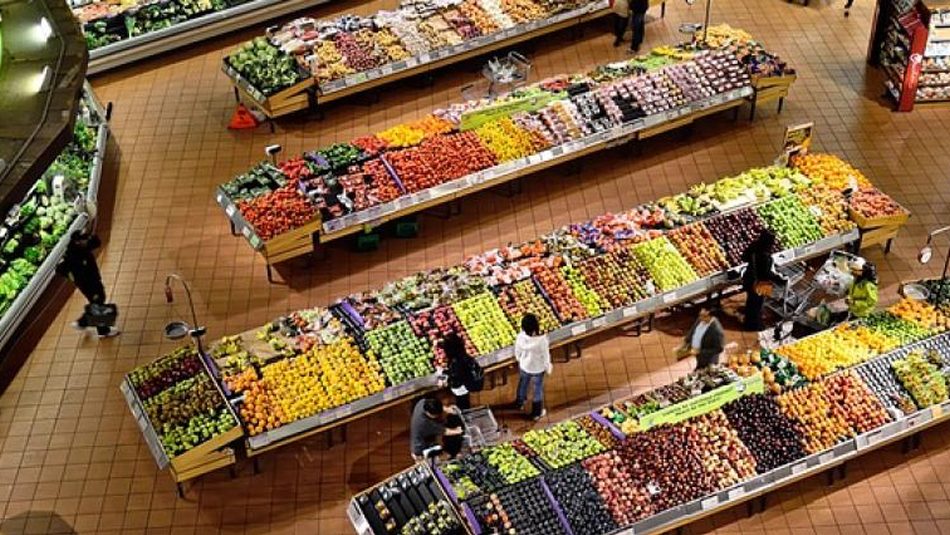
5 Grocery Shopping Trends and Opportunities For Marketers
Target just announced plans to spend billions of dollars over the next three years to redesign 500 stores. The redesign places greater emphasis on groceries, with a second entrance providing easy access to the grocery department, more fresh produce, and self-checkout lanes. The importance of grocery shoppers is not lost on Target. The previously staid supermarket business has entered a period of great volatility, with retailers responding to rapid changes in both eating and shopping habits. Here are a few of the major changes affecting the industry, and some thoughts on how food marketers can respond to these changes.
The Rise of Grocery Delivery
If you want to see the future of the grocery business, look to China. According to a Nielsen report, 40% of the Chinese population have ordered perishable groceries to be delivered to their home and 47% have ordered packaged groceries. The numbers for South Korea (39% and 43%) and India (34% and 35%) aren’t far behind.
The North American market has a way to go before reaching these levels, with only 10% now saying they have ordered groceries online for home delivery. But there are signs that e-commerce growth is ready to break out in grocery. Walmart reported e-commerce sales up 29% in Q4 2016, with grocery sales specifically called out.
Opportunity for Food Marketers:
As online grocery shopping grows in importance, food marketers have to generate a purchase without the consumer physically interacting with the product. This may require making difficult decisions, like whether to provide full nutritional information online.
In-Store Tech Boom
Technology is changing shopping inside stores too. Amazon grabbed headlines earlier this year when they opened their pilot Amazon Go cashier-less grocery store, where customers have their purchases charged directly to their smartphones. And Amazon Fresh delivery service keeps growing too.
Traditional grocery stores are determined not to be left behind. Kroger, the largest grocery chain in the US with over 2,700 stores, has already deployed technology in multiple ways. They use sensors to monitor foot traffic and schedule cashiers at the right time. Their mobile app analyzes shopping habits to deliver targeted digital coupons. And they are testing interactive shelves that send personalized offers and product suggestions to shoppers via their smartphones as they walk down the aisle.
Whole Foods is testing a touchscreen kiosk called Baldor Forager, where shoppers can order specialty produce items not found in the store. These items don’t have enough broad appeal to command shelf space (or enough stock turn to avoid spoilage), so the efficiency of the special-order option on the touchscreen allows Whole Foods to maintain its leadership position in providing gourmet options not available elsewhere.
Whole Foods also recently teamed up with Dunnhumby, the data-mining company that led Tesco to a dominant position in the UK and helped Kroger to develop a state-of-the-art loyalty card program in the U.S. Whole Foods also revamped their loyalty program, with a test in the Texas market currently underway.
Opportunity for Food Marketers:
Food marketers who connect with their customers and create a dialogue with them through social media and other content marketing efforts can provide data-hungry retailers with profiles of their target audiences.
Grab & Go or Grab & Stay
Supermarkets are going after restaurant dollars and Millennial shoppers with expanded grab-and-go prepared food offerings. The take home offerings cater to time-pressured customers willing to pay for convenience. Even in the produce department, packaged vegetables and fruit are growing in importance because shoppers on the run don’t have time to cherry pick their selections.
As a bonus, the optics of fresh, prepared foods add to the healthy and nutritious image of the store. Stores as disparate as Hy-Vee and Whole Foods take it a step further by offering sit-down restaurants in-store.
These options make the supermarket a dining destination and keep customers coming back. One new Hy-Vee will even house a fitness center.
Opportunity for Food Marketers:
Don’t forget supermarket chains as a Foodservice opportunity.
Small is Big
Ahold packs organic, gluten-free, and vegan options into its 11,000 sq. ft Bfresh stores. Plus, a “Little Kitchen” section provides convenient, affordable options for busy urban shoppers: grab-and-go, ready-to-eat and ready-to-heat items, along with fresh meal components. They also carry an extensive line of private label items.
Venerable 7-Eleven acknowledges the changing competitive marketplace by introducing a healthier product mix and partnering with a delivery service app in 27 markets.
And even though Walmart has given up its 12,000 sq. ft. Walmart Express stores, they’re now testing 2,500 sq. ft. convenience stores in Texas.
These moves target time-stressed Millennial and Gen X shoppers who demand convenience and choice.
Opportunity for Food Marketers:
Smaller format stores put pressure on food marketers to battle for limited shelf space, especially since the assortment in these stores includes private label, organic, and healthier options. Packaging and product options that appeal to Millennials and Gen X will win these battles.
Multicultural is a Must
Multicultural consumers are the fastest growing segment of the population. On top of that, they make 3% more trips to stores with fresh items and spend 4% more of their food dollars in fresh departments. So, retailers place more and more focus on perimeter departments (i.e. deli, bakery, meat, seafood, dairy, and produce). It’s quite a challenge for retailers, since different groups within the multicultural segment have quite different preferences.
In addition, Millennials are 10-20% less interested in classic American or Americanized ethnic foods than baby boomers, and express increased interest in different kinds of global cuisine.
Opportunity for Food Marketers:
Food marketers who can help retailers appeal to the multicultural target and consumers craving diversity can gain leverage, and possibly position themselves to get off-shelf display in valuable perimeter departments.
Sun Tzu said, “In the midst of chaos there is opportunity.” The rapidly changing grocery retail marketplace can certainly look chaotic, but it definitely offers opportunities for nimble food marketers.
This article originally appeared in SmartBrief: Are you ready for high-tech grocery stores?
Key Resources:
What’s In-Store for online Grocery Shopping
Will supermarkets become a new competitor for restaurants?
Grocers Must Engage Multicultural Shoppers at Perimeter: Nielsen
Millennial tastes are driving marketers crazy, but it’s doing the food industry good.





